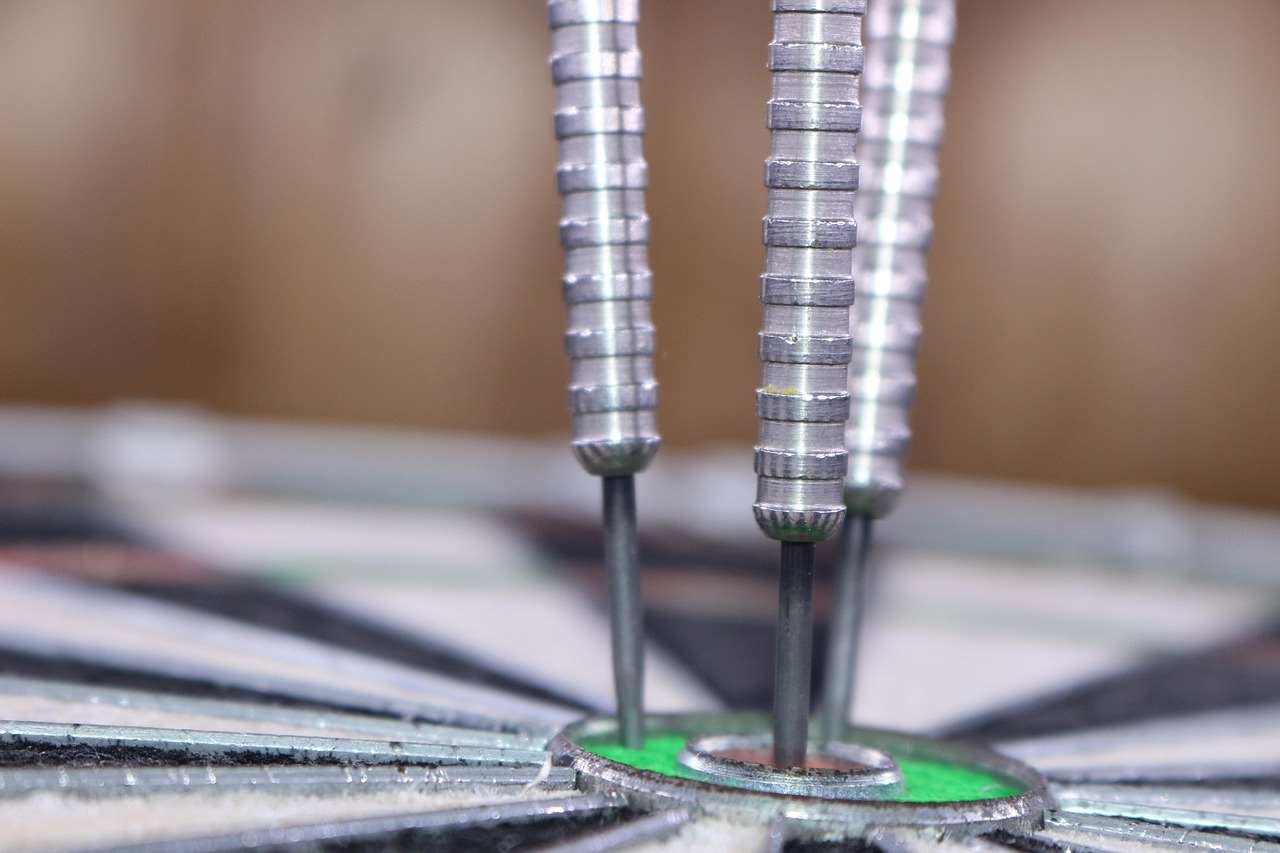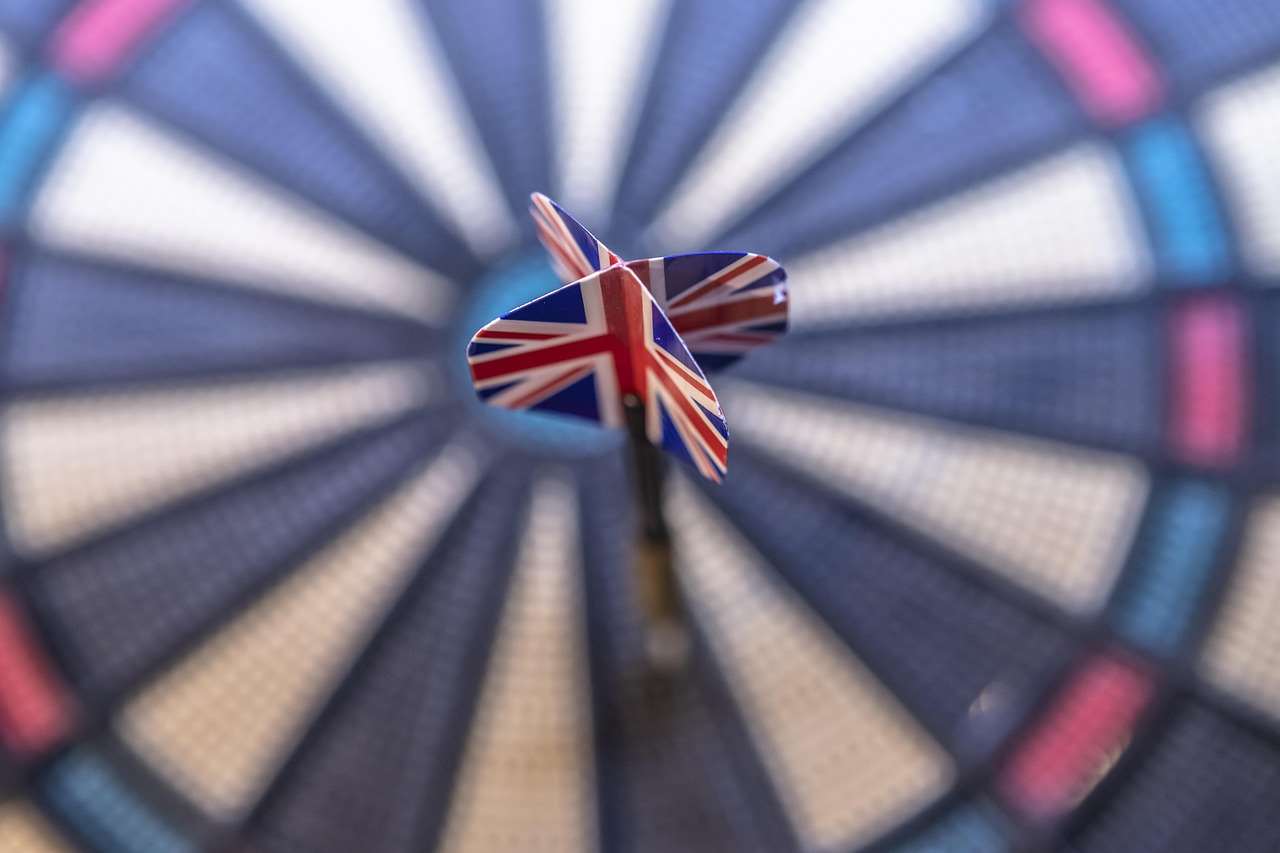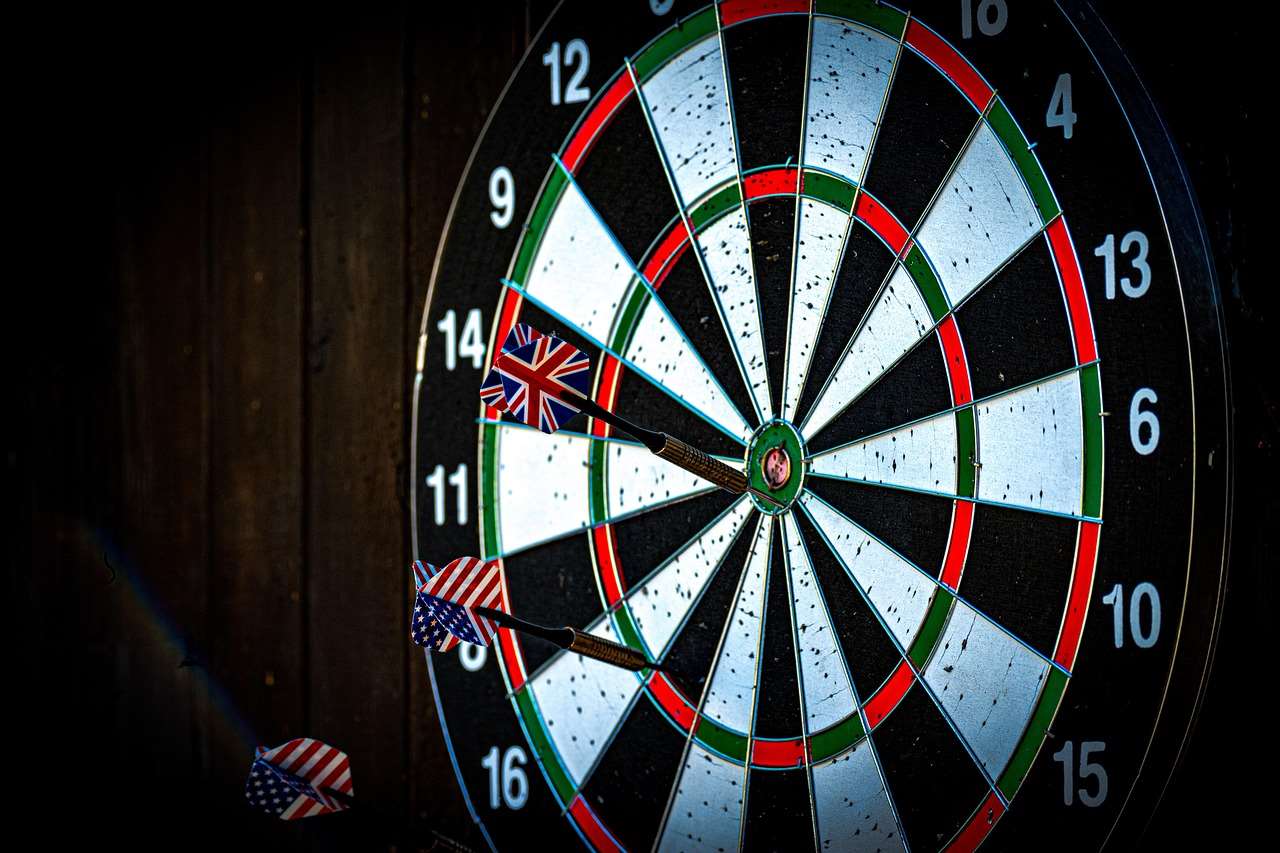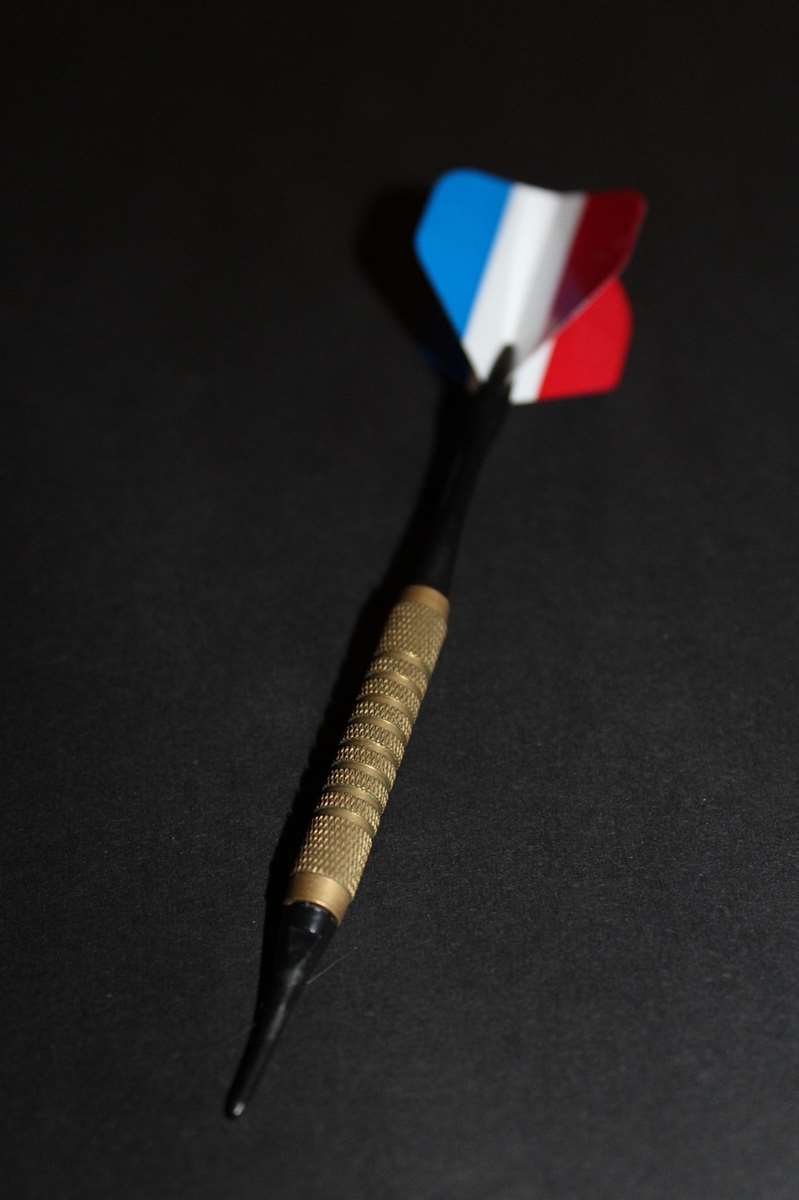The Golf darts scoring system mimics traditional golf, transforming your dartboard into an 18-hole course where low score wins; essentially, each throw represents a golf swing, and your goal is to complete each “hole” (section of the dartboard) in as few throws as possible. This golf darts scoring system guide will teach you everything you need to know about playing, from setting up the game to mastering advanced strategies. You’ll learn the rules, scoring methods, course layout, and how to adapt the game for different skill levels.
⚠️ Still Using Pen & Paper (or a Chalkboard)?! ⚠️
Step into the future! The Dart Counter App handles all the scoring, suggests checkouts, and tracks your stats automatically. It's easier than you think!
Try the Smart Dart Counter App FREE!Ready for an upgrade? Click above!
Understanding the Golf Darts Scoring System
The beauty of the Golf darts scoring system lies in its simplicity and adaptability. It’s a fantastic way to introduce new players to darts while offering a challenging twist for seasoned veterans. To fully appreciate the game, it’s important to understand the fundamental principles that govern gameplay and scoring.
Core Concepts
- Holes: Each round of Golf darts represents a simulated 18-hole golf course. Each hole corresponds to a specific number on the dartboard, played in numerical order (1 through 18).
- Par: Similar to golf, each hole has a “par,” which is the number of darts you’re ideally expected to use to complete that hole. Typically, the par for each hole in darts golf is set at 3.
- Scoring: Your score for each hole is the number of darts you use to hit the target number (e.g., hole 1 means you’re aiming for the number 1 section of the dartboard). Lower scores are better, just like in golf.
- Winning: The player with the lowest cumulative score across all 18 holes wins the game.
The Golf darts scoring system essentially transfers the essence of golf to the dartboard. It adds a layer of strategic thinking as players must consider risk versus reward with each throw.

Setting Up a Game of Golf Darts
Before you can start playing, you need to prepare the game. The setup is straightforward, making it easy to start enjoying Golf darts quickly. Here are the essential steps involved in getting a game underway:
Dartboard and Playing Area
Ensure your dartboard is properly mounted at the regulation height (center of the bullseye 5 feet 8 inches from the floor) and distance (7 feet 9 1/4 inches from the front of the board to the oche or throwing line). A well-lit playing area is also crucial for accuracy and enjoyment.
Players and Order
Decide who is playing and determine the order of play. This can be done randomly or based on skill level, ensuring everyone has a fair and enjoyable experience. You could even let players throw a dart closest to the bullseye to determine the playing order.
Understanding Target Numbers
The “course” in Golf darts follows the numerical order of the dartboard, from 1 to 18. So, hole number one requires the player to hit the number one, and so on. Understanding this sequence is essential to navigating the game, and keeps players on track. Darts Variants Fun Games are fun, but this game also can be!
The Rules of Golf Darts: A Comprehensive Guide
Now that you understand the setup and scoring, it’s time to delve into the core rules of Golf darts. These rules ensure fair play and consistent scoring throughout the game.
Hitting the Target Number
For each “hole,” players must hit the corresponding number on the dartboard. This can be achieved by hitting the single, double, or triple segment of that number. For example, on hole number 5, you can hit the single 5, the double 5, or the triple 5 to successfully complete that “hole”.
Completing a Hole
A hole is considered completed when the player successfully hits the target number. If a player fails to hit the target number after three darts, they move on to the next hole and are assessed a score of 4 for the hole (one stroke over par). Some house rules allow for more throws, but this typically slows down the game.
Out of Bounds (Optional Rule)
Some variations introduce an “out of bounds” rule, where hitting certain parts of the board (like the bullseye or a non-target number) results in a penalty stroke. This adds a layer of complexity and risk management to the game.

Golf Darts Scoring in Detail
Accurate scoring is paramount to a fair and competitive game of Golf darts. Here’s a breakdown of how to track and calculate scores:
Number of Darts Per Hole
The score for each hole is simply the number of darts it takes to hit the target number. If you hit the number with your first dart, your score for that hole is 1. If it takes all three darts, your score is 3. If you fail to hit the number in three darts, your score is 4.
Total Score Calculation
At the end of the 18 “holes,” each player adds up their scores for all the holes. The player with the lowest total score is declared the winner. Tie-breakers can be resolved by playing sudden-death holes (starting again from hole 1) until a winner emerges.
Scorecard
Maintaining a clear scorecard is essential. You can create a simple table with columns for each player and rows for each hole. Record the number of darts used for each hole, and then sum the scores at the end of the game to determine the winner.

Advanced Strategies for Golf Darts
Once you’ve mastered the basics of the Golf darts scoring system guide, you can start exploring more advanced strategies to improve your game. These strategies involve a combination of precision, risk assessment, and psychological tactics.
Targeting Strategy
Consider aiming for the triple segment of the target number if you’re confident in your accuracy. Hitting the triple on your first dart will significantly lower your score. However, if you’re less accurate, aiming for the larger single segment might be a safer bet to avoid missing the target altogether. Knowing your abilities is key to this approach.
Risk Management
Assess the risk versus reward on each throw. Is it worth trying for the triple, or is a more conservative shot the better option? Factors to consider include your current score, your opponent’s score, and your confidence level.
Mental Game
Stay focused and maintain a positive attitude. Darts is as much a mental game as it is a physical one. Don’t let a bad hole throw you off your game. Learn from your mistakes and move on to the next hole with confidence.

Variations of Golf Darts
One of the great things about Golf darts is its versatility. You can easily adapt the game to suit different skill levels and preferences. Here are a few popular variations:
Handicap System
Implement a handicap system to level the playing field between players of different skill levels. This can be done by giving weaker players a certain number of “free” darts or deducting points from their final score. This way everyone has a chance to win!
Team Play
Play Golf darts in teams, with each team member alternating throws. This adds a social element to the game and encourages teamwork and communication.
Par Adjustments
Adjust the par for each hole based on the difficulty or the skill level of the players. For example, you could increase the par for holes with smaller target areas. You can create different difficulties this way, and even create new courses of different par totals and rankings.

Benefits of Playing Golf Darts
Beyond the fun and challenge, playing Golf darts offers a variety of benefits:
- Improved Accuracy: Regular practice will undoubtedly improve your dart throwing accuracy and consistency.
- Mental Focus: The game requires concentration and strategic thinking, which can enhance your mental focus and problem-solving skills.
- Social Interaction: Golf darts is a great way to socialize with friends and family, fostering camaraderie and healthy competition.
- Stress Relief: The repetitive motion of throwing darts can be surprisingly therapeutic and help relieve stress.
Conclusion: Master the Golf Darts Scoring System
Understanding the Golf darts scoring system guide is essential for enjoying this engaging and versatile game. By mastering the rules, scoring methods, and strategies outlined in this guide, you’ll be well on your way to becoming a skilled Golf darts player. So, grab your darts, gather your friends, and start playing! Experiment with different variations and handicap systems to find what works best for your group. With a little practice and a lot of fun, you’ll be hitting those target numbers in no time. Are you ready to improve your game and impress your friends? Head over to our online store to check out new dart boards and supplies! Darts Variants Fun Games are fun and unique, but this classic darts game is one you do not want to miss.
Hi, I’m Dieter, and I created Dartcounter (Dartcounterapp.com). My motivation wasn’t being a darts expert – quite the opposite! When I first started playing, I loved the game but found keeping accurate scores and tracking stats difficult and distracting.
I figured I couldn’t be the only one struggling with this. So, I decided to build a solution: an easy-to-use application that everyone, no matter their experience level, could use to manage scoring effortlessly.
My goal for Dartcounter was simple: let the app handle the numbers – the scoring, the averages, the stats, even checkout suggestions – so players could focus purely on their throw and enjoying the game. It began as a way to solve my own beginner’s problem, and I’m thrilled it has grown into a helpful tool for the wider darts community.